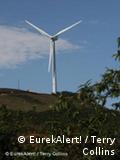【光是站著就好萌:藍腳鰹鳥】
這種鳥兒有雙超搶眼的藍色大腳丫,雌鳥和雄鳥都喜歡腳的顏色比較亮的對象,雄鳥會藉由炫耀自己的腳及跳舞等方式來吸引雌鳥。牠們走路搖搖擺擺,動作笨拙又 逗趣,厄瓜多外海的加拉巴哥群島是藍腳鰹鳥知名的棲地。12月5日、12日、19日(週四)晚間十點公視要播出《重返加拉巴哥》,當中也有這種可愛動物 哩!
►公視節目預告:http://goo.gl/nV7GWE
►分享封面抽好書:http://goo.gl/SEmjHz
這種鳥兒有雙超搶眼的藍色大腳丫,雌鳥和雄鳥都喜歡腳的顏色比較亮的對象,雄鳥會藉由炫耀自己的腳及跳舞等方式來吸引雌鳥。牠們走路搖搖擺擺,動作笨拙又 逗趣,厄瓜多外海的加拉巴哥群島是藍腳鰹鳥知名的棲地。12月5日、12日、19日(週四)晚間十點公視要播出《重返加拉巴哥》,當中也有這種可愛動物 哩!
►公視節目預告:http://goo.gl/nV7GWE
►分享封面抽好書:http://goo.gl/SEmjHz
The term "Galápagos" refers to the Spanish name given to the Giant Land Tortoises known to inhabit the islands.
Wikipedia article "Galápagos Islands".
Britannica Concise Encyclopedia: Galápagos Islands
They became internationally famous after being visited in 1835 by British naturalist Charles Darwin; their unusual fauna, including the giant tortoise (Spanish galápago), contributed to his ideas on natural selection.
Ecuador made the Galápagos a wildlife sanctuary in 1935 and a national park in 1959; in 1978 they were designated a UNESCO World Heritage site.
iving Planet | 21.02.2008 | 04:30
Wind Turbines Replace Dirty Diesel on Pristine Galapagos Islands
The world's top energy companies have joined with the UNDP and the government of Ecuador to supply half of the Galapagos' energy needs through the San Cristobal Wind Project.
Side-effects to energy generation, including pollution and habitat destruction, continue to be one of the biggest man-made threats to the biodiversity on our planet. This is especially true among the world’s most precious, famous and fragile ecosystems: The Galapagos Islands.
The Galapagos are home to a vast number of endemic species. And so in January 2001, the world held its breath when the tanker Jessica, loaded with 150,000 gallons of fuel, struck a reef and began breaking up in the heart of the Galapagos.
The sight of thousands of gallons of oil pouring into the ocean triggered an international initiative to mitigate the risks of future spills by dramatically reducing the islands’ dependence on diesel fuel to generate electricity.
Ecuador is currently celebrating the 500th anniversary of the Galapagos’ discovery, and earlier this week, President Rafael Correa launched a program to end the use of fossil fuels on the Galapagos by 2015, an initiative led by the San Cristobal Wind Project.
Living Planet speaks to Jim Tolen, project manager of the San Cristobal Wind Project.
Interview: Nina Haase


沒有留言:
張貼留言